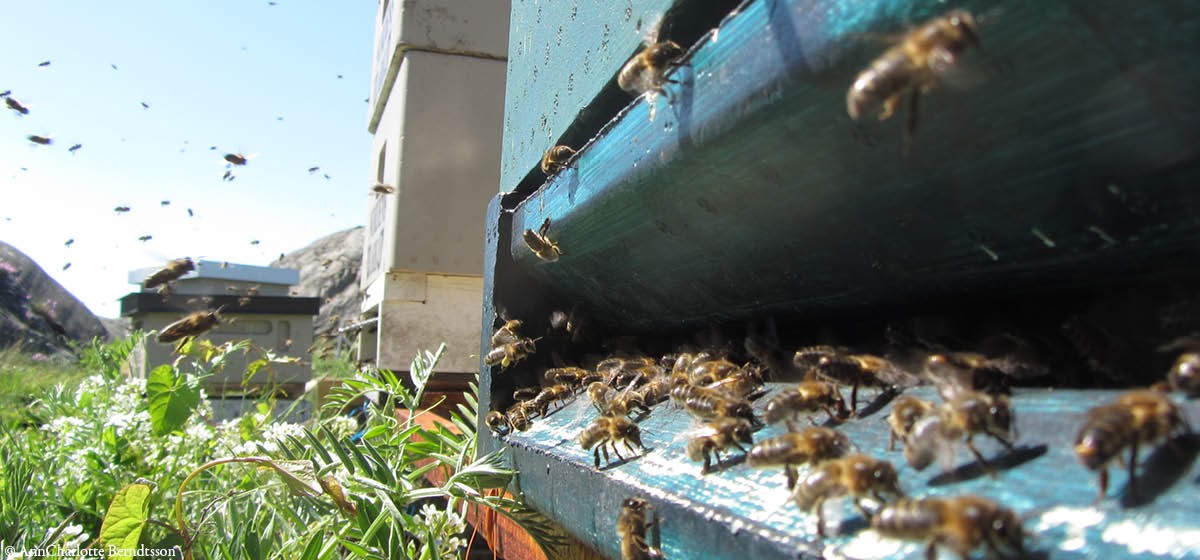Nordic Brown Bee Project
The Nordic brown bee is highly threatened, today mainly imported yellow (Italian and Buckfast usually) honey bees are seen. Few people today keep Nordic brown bees, and therefore it is important to continue measures to preserve them. Nordic brown bees are probably better adapted to Swedish flora and fauna, while imported honey bees are said to be more efficient in cultivated environments. Through genetic dilution (interbreeding of imported honey bees) Nordic bees came close to extinction.
What we do at Nordens Ark
In 1992, Project Nordbi was formed to, with the support of Sweden's beekeepers, the EU and others, work to actively carry out rescue work for our native honey bee. The project needed more participants/queen breeders and better opportunities to keep Nordic bees also in Bohuslän, which previously lacked places for pure mating of Nordic brown bees.
In 2014, Nordens Ark started a Nordic bee conservation project in collaboration with Projekt Nordbi, and in 2015 it was decided that Nordens Ark would start a mating ground for Nordic brown bees in Bohuslän. This mating site is on the Väderöarna, which is an island group 13 km west of Fjällbacka. The Väderöarna islands are separated from the mainland by the Väderö Fjord/channel and are an ideal mating ground due to their isolated location. Bees from the mainland do not, as far as we know, reach the Väderöarna islands, and thereby full control of the breeding material can be guaranteed to ensure that the Nordic queens mated on the Väderöarna islands only meet males from Nordens Ark's apiary on the Väderöarna islands (Storö).


Great demands regarding genetic ancestry are placed on the breeding societies that are selected as drone producers and breeding queens. All communities are checked for wing index values, which means that the net pattern in the wings is checked. The pattern reflects the bee's genetic make-up and reveals whether there has been interbreeding with foreign types of honey bees. Each bee subspecies and insect species in general have their own species-specific web patterns. The measurement of the wing index is an important tool in the breeding work with Nordic brown bees.
News from the project – December 2025
The 2025 beekeeping season has been a bit of a mixed bag. Unfortunately, some of our bee colonies were affected by European foulbrood, which meant that fewer queens than we had hoped were able to leave our mating station on the Väderöarna islands. As a result, much of our time was spent caring for the affected colonies and trying to trace where the infection came from. While European foulbrood is less serious than the American variant, we take it seriously and want to avoid spreading it to other apiaries. Our goal is to return to normal operations next year.
On a more positive note, the colonies that were placed in log hives in 2024 came through the winter in good shape. During the summer, they have built up healthy food stores in preparation for the next winter. With the help of temperature loggers installed both inside and on the outside of the hives, we have been able to follow how the bees manage their lives in log hives over time. We will now analyse this data to explore whether different bee strains cope differently with living in this more natural type of hive.
In collaboration with
Projekt Nordbi



